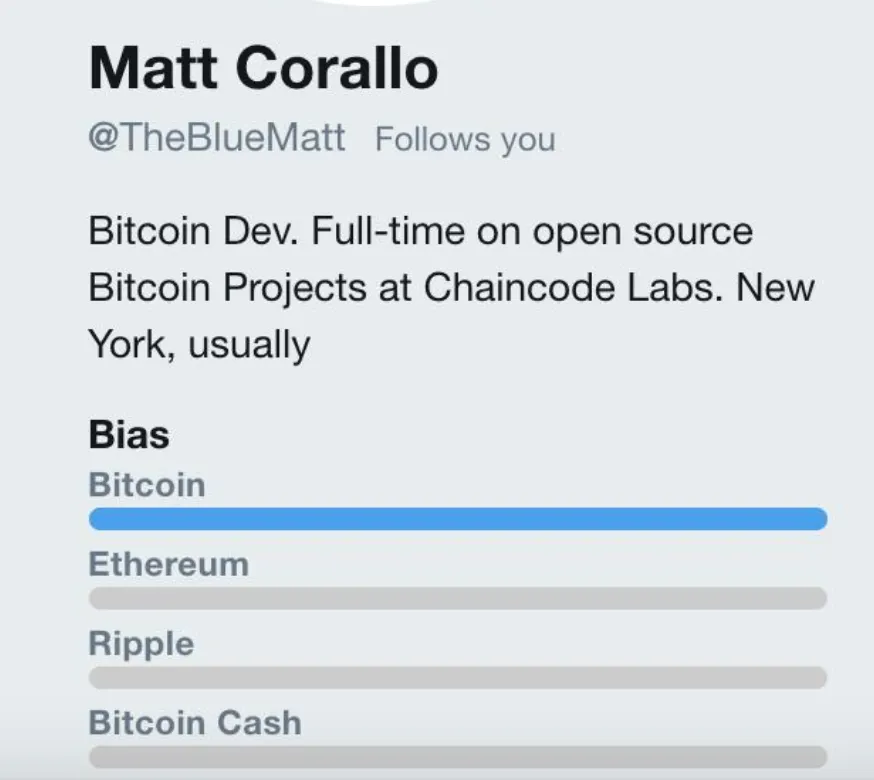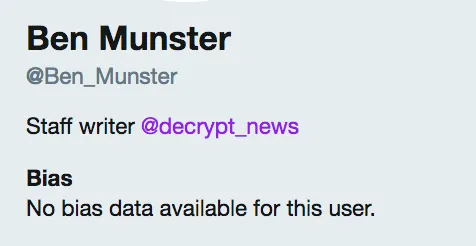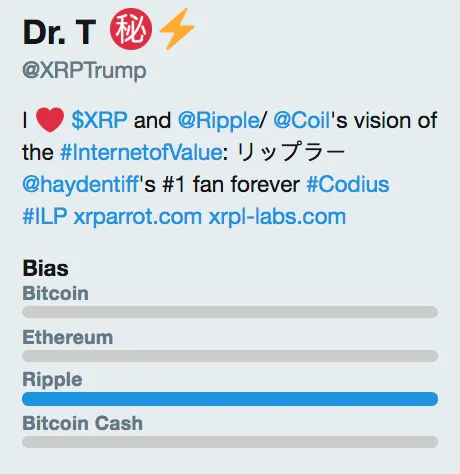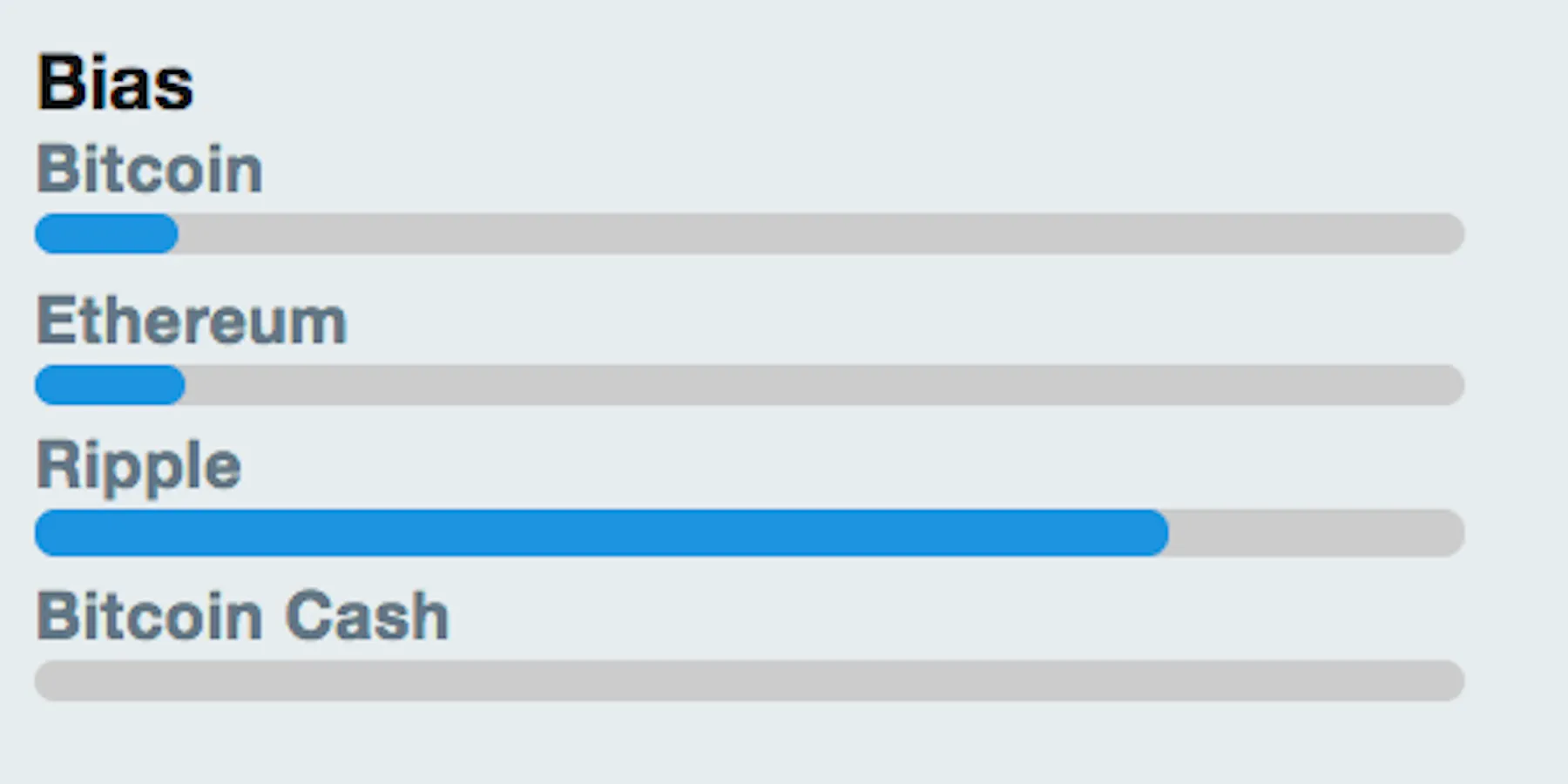We do the research, you get the alpha!
"Coinflict-Of-Interest" knows your vested interests. Using a simple algorithm, it sifts through your Twitter followers—as well as your followees, and the followers of your followers—to establish your bias toward a particular cryptocurrency, if you have any.
Its creator Luke Childs told Decrypt that it was an effective filter for Crypto Twitter, a way to “determine how seriously I should take a Tweet.”

Bias is measured with a scaling blue bar, beneath the user's profile picture, and many of the results are predictable. Vitalik Buterin comes up as mostly biased toward Ethereum. (There's a little Bitcoin Cash in there.) Blockstream's Adam Back is 100 percent Bitcoin. Hated blockchain skeptic David Gerard, as we suspected, is in fact a Bitcoin Cash shill. And vile Ripple booster Tim Copeland? It says there is "no bias data available for this user," indicating a lack of followers/followees. That makes sense—Tim has no friends. (Neither does Decrypt, apparently.)

Some of Coinflict-of-Interest's conclusions are more questionable. Bitcoin maximalist Anthony Pompliano, for instance, is shown with a significant Ripple bias. Why?
"My algorithm does a reasonably good job of squashing out small chunks of followers from currencies you aren't really aligned with," said Childs, the open source dev behind the app. "But if you have a huge number of followers from another currency, it breaks down."

It’s possible, he explained, that Pompliano relies on bots to boost his growth. (We're not judging.) These bots hunt down accounts associated with "crypto," and follow them. A follow usually elicits a follow back. Sometimes, the bot will land on another bot—many of which have been press-ganged into the XRP Army. Pompliano, Childs surmised, has "just amassed a huge amount of Ripple bot account followers.”
Coinflict-of-Interest, you see, uses a thing called “Hive.one” to determine bias. Hive.one, according to a spokesperson, maps “how attention flows between Twitter accounts,” organizing users into “clusters” of follower-followee relationships. It can ascertain the values of a given cluster by looking at the most dominant accounts associated with it—a cluster whose most followed figure is Vitalik Buterin, for example, would be assumed to comprise Ethereum fans. Coinflict of Interest translates membership of certain clusters into bias.
Hive.one, admittedly, is based on a somewhat flawed, circular logic—though clusters are delineated by algorithm, its developers make analogue judgements to determine the values of each cluster. “There could be a more robust, algorithmic approach employed to that, but at this point we do this manually,” Hive.one told Decrypt.
As such, Childs thinks the app would improve were it to rely on "sentiment analysis." That is, if it used AI to dig through influencers' actual tweets to make judgements based on language. But he’s doing it for free, so doesn't have the resources. Be grateful.
Coinflict-of-Interest is still a work in progress, added Childs. Currently, it accounts for Bitcoin, Ethereum, Ripple and Bitcoin Cash.
For the sheer thrill, here’s a list of Crypto Twitter titans whose biases we checked out:



There you go, a whole three, one of which is myself. See this thread for more.





